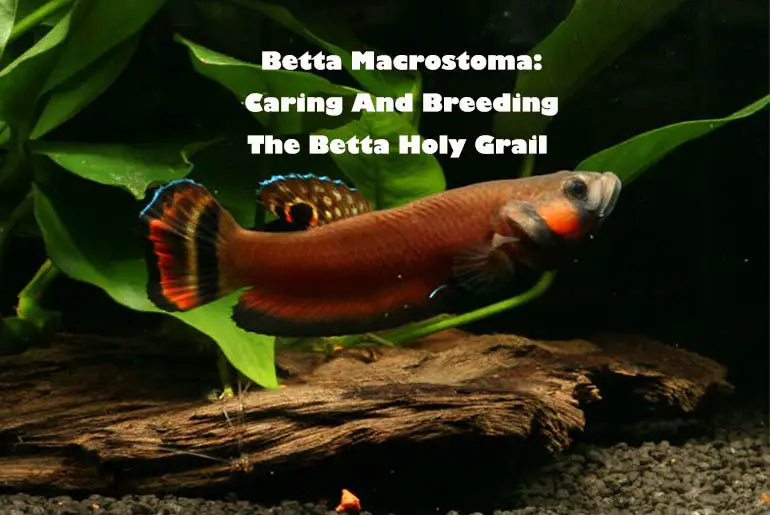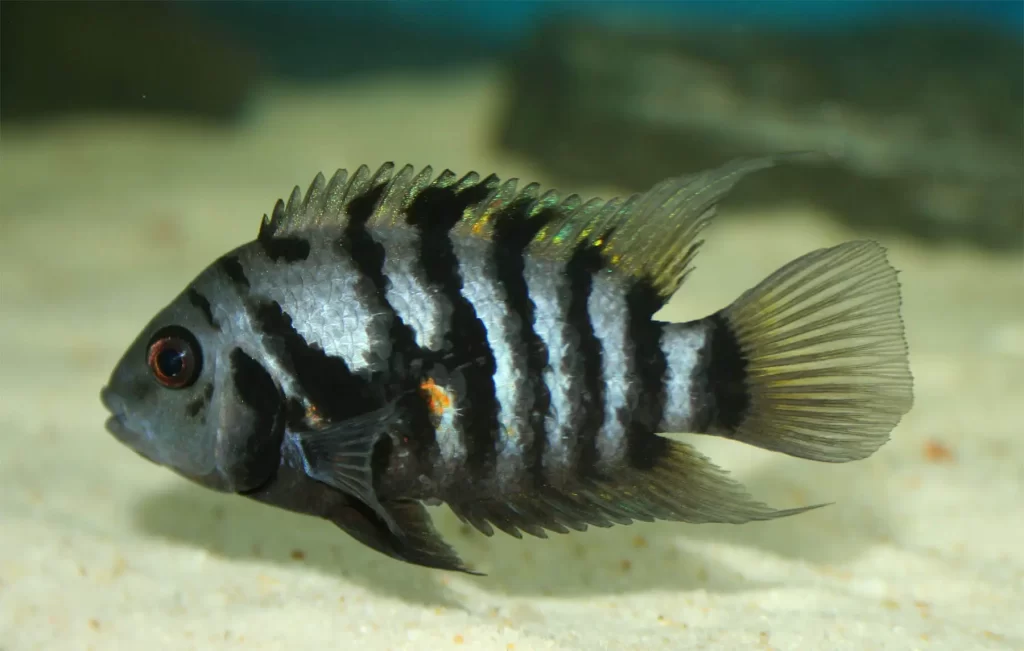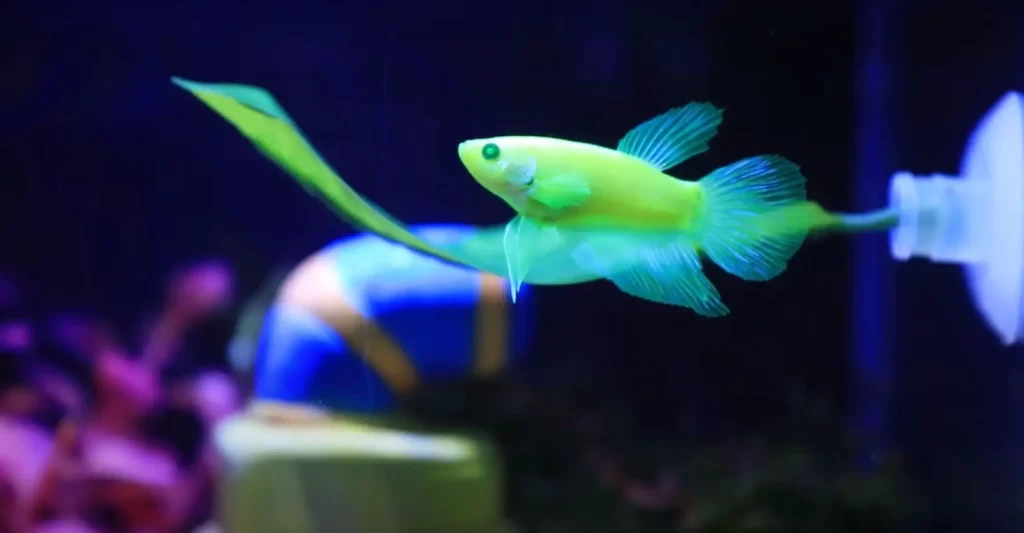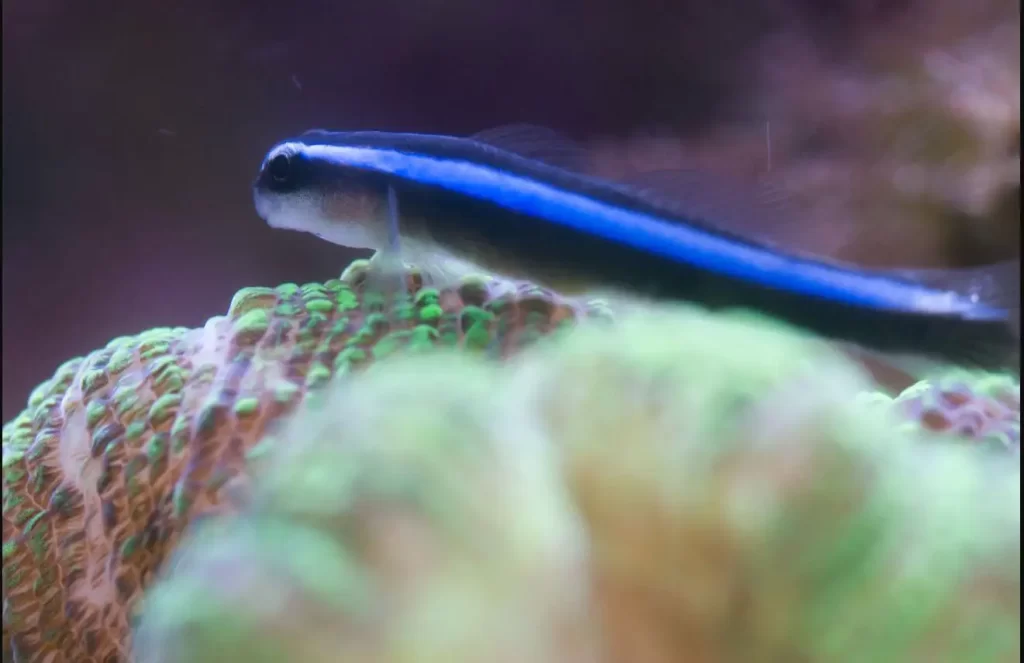In the world of fish keeping, there are certain species of fish that are considered rare and exotic. These types of fish are usually hard to find and difficult to keep as an aquarium pet. But, if you are capable enough to keep these kinds of fish in proper conditions, then your aquarium will be the topic of most admirations. Talking about exotic and rare fish species, the Betta Macrostomas is certainly one of the rare and exotic fish species and is considered the Betta holy grail by most of the fishkeepers.
Betta Macrostoma is a species of tropical fish that is considered difficult to keep and even more difficult to breed. Precise conditioning of tank, water, and proper supply of diet is mandatory to keep these fish properly. As a result, only the veteran fish keepers with lots of experience can properly keep Betta Macrostoma.
But then again, even the most experienced fishkeepers need proper knowledge and information to keep the special fish species like Betta Macrostoma. Stay tuned, as I will be talking about explaining the proper caring and breeding requirements for your convenience.
| Image | Types of equipment | Link |
 |
Tetra Aquarium 20 Gallon Fish Tank Kit, Includes LED Lighting and Decor |  |
 |
SeaClear 50 gal Acrylic Aquarium Combo Set, 36 by 15 by 20″, BlackSC |  |
 |
SAN FRANCISCO BAY Brand Freeze Dried Bloodworms 1.75oz | |
 |
Uncle Jim’s Worm Farm 500 Count Red Wiggler Live Composting Worms | |
 |
Ocean Nutrition Instant Baby Brine Shrimp 0.7-Ounces (20 Grams) JarBrine shrimp | |
 |
Live Aquarium Plants – Java Moss Stone pad (3 Pack) |
Overview Of Betta Macrostoma
The word Macrostoma is a Greek word meaning “big mouth”. The Betta Macrostoma, also known as the “Brunei Beauty” a freshwater labyrinth fish species from the Betta family. They originate from the small South-East Asian country called Brunei Darussalam on the island of Borneo.
Many people consider Betta Macrostoma as a vulnerable species of fish as it currently sits on the International Union for Conservation of Nature’s (IUCN) red-list of the threatened species.
Scientists considered this particular species extinct for over 50 years due to the destruction of their natural habitat. Furthermore, only with the recent rediscovery of the Betta Macrostoma in a certain waterfall of Brunei led to its resurgence.
Appearance Of Betta Macrostomata
In appearance, you will see these fish grow to around 3.5 inches long. Some have been found to grow as much as 4.3 inches long. The body of the male Macrostomata has an orange color with black areas on their mouth, tail fin, anal fin, and dorsal. They also have a black colored band shape on their neck and some also develop white markings while showing breeding behavior.
Besides, the coloring of the females is silvery-brown and has two notable lateral bands. Furthermore, one of the most distinguishable features is their big gaping mouth.
Moreover, this species of Betta fish is a relative of the Betta Splenden (Siamese fighter fish). But, opposite to its relative, the males do not fight with each other to the death.
Betta Macrostomas are mouthbrooding fish, due to which the male takes the fertilized eggs on its mouth for brooding up to a month until they hatch.
You might also be interested in the next article on Betta Fish Tail Types and Patterns – Updated List 2020.
Royal Protection To Betta Macrostoma
As mentioned above, Betta Macrostoma had been extinct for a long time until after the resurgence. Due to the danger of possible recurrent extinction, the Macrostoma has received royal protection in Brunei.
The sultan of Brunei Hassanal Bolkiah Mu’izzaddin Waddualah made it illegal to catch, possess, and trade Betta Macrostoma in Brunei. But, the fish still faces illegal trading.
In the case of Betta Macrostoma, I sincerely suggest you keep these magnificent fish with the sole purpose to breed them. This shall lead to aid in increasing their numbers. First of all, it is very difficult to locate any potential homebred Macrostomas in the market.
Contrastingly, there is no equivalent rarity of fish keepers demanding Macrostomas in the market. As a result, a lot of illegal trading and catching of the fish happens due to high demand. This can further hamper their numbering in the wild, leading to a possible re-extinction.
Classification Of Betta Macrostoma
The following are the details on the classification of Betta Macrostoma:
Kingdom
Kingdom Animalia consists of all the animals in the world and is the largest among the fish kingdoms.
Super Class
Gnathostomata is the superclass of vertebrates consisting of the following features:
- Opposing jaw
- Teeth
- Paired appendages
- A horizontal semicircular canal of the inner ear
- Adaptive immune system.
Class
Actinopterygii is the class that is a subcategory of bony fish. They are also known as Ray-finned fish. The fish under this class have a bony structure supporting their webbed fins.
Order
Anabantiformes are an order of freshwater ray-finned fish. The fish from this order are characterized by teeth on the parasphenoid and consist of labyrinth organs.
Family
Osphronemidae, also known as Gouramis or Gouramies are the freshwater fish mostly found in South-East Asia.
Genus
Betta Macrostomas are from the Betta genus. The Bette consists of 73 different species of fish under its genus.
Species
Betta Macrostoma, Brunei beauty.
Distribution And Natural Habitat
As I have already mentioned, the Betta Macrostoma originates in Brunei, a country on the island of Borneo in South-East Asia. Brunei consists of tropical rain forests and rich biodiversity.
Due to this, the natural habitat of Betta Macrostomas are found in the clean freshwater streams below the waterfalls in Brunei’s forests. In addition, you can also find them in the shallow waters of ponds, slow-moving streams, and wetlands.
How To Properly Take Care Of Betta Macrostoma?
Many fishkeepers consider Betta Macrostoma difficult fish to keep due to precise requirements and high effort. But, if you are able to maintain and provide the proper special parameters and conditioning, then it is not as difficult as people expect.
Some useful articles on how to maintain a proper aquarium:
- How to Clean And Maintain Aquarium? – The Easiest Way
- How To Maintain The Oxygen Level In Aquarium?
- Why Do Fish Tanks Get Dirty So Fast – How To Clean And Maintain Tanks
- How to Maintain Aquarium During Summer?
In this segment of the article, I will be explaining the special parameters and conditioning required to successfully take care of Betta Macrostoma.
Tank Setup
Normally, you would want a 20-gallon aquarium for keeping the Betta Macrostoma. If you are planning to keep the school of Betta Macrostoma, then a 50-gallon tank is your go-to aquarium size because an aquarium with a bigger size is equally useful for the time of quarantining the fish for pairing. Furthermore, I recommend an additional 50-gallon tank for the breeding purpose, and for the fry is as well.
Similarly, Betta Macrostomas are very active fish, so you would want to provide them a spacious environment. You will also have to keep a close lid on the tank because these fish are jumpers. You can find more on ‘Why Do I Need A Lid For My Fish Tank? Here Are My 5 Reasons’.
The natural habitat of the Macrostoma has a fair share of water flow, so make sure the tank water has a reasonable water flow.
I have also written an article about How To Set A 50-Gallon Fish Tank? and How To Setup A 20-Gallon Fish Tank: Livestock and Equipment List. Check it out!
Water Conditions
Betta Macrostoma prefers acidic water having a range of 6.5 to 7.5 ph level with soft water, so make sure you maintain your water’s pH level to this range. The water hardness in the tank should be maintained at 1 to 10 DKH. I recommend using the Reverse Osmosis kit to create soft water and balance the hardness, also mix 10 % of tap water.
You can check out ‘Why is Tap Water Not Safe For Fish? & How to Make It Safe?’.
Approximately, 25 % of the water should be changed weekly or a daily 10 % can also be removed to maintain stable water conditions.
Betta Macrostoma does not tolerate dirty water with shifting water parameters. Due to this, the tank water needs to be fully cycled with no ammonia or nitrites in the water with a stable water parameter.
Heating And Temperature
You will also need to install heaters, as the water temperature needs to be in the range of 70- 75° Fahrenheit. You can select the heater required for your aquarium based on the 3 to 5 watts per gallon capacity of the tank.
As for the type of heater, I suggest using an automatic heater. Controlled water temperature ensures your fish’s well being and a stable temperature. Specifically, I recommend the Fluval E Electronic Heater. This heater is available in 100, 200, and 300 watts, supports up to 100 gallons, sets the temperature from 68 to 93° degrees, and is completely automatic.
You might also be interested in the article about ‘How to Increase pH Level in a Freshwater Tank?’.
Lighting
For Betta Macrostoma’s aquarium lighting, I suggest you install some smoked glass or light consisting of a dimmer. Because the Macrostoma does not like bright lights as overexposure can cause them stress and overstimulation. Due to this, the fish enjoys dimmer lighting in its environment than the bright lights.
Now, smoked glasses tend to be very expensive, so dimmer lights are the better option if you have a low budget. Ticoze LED Aquarium Light, Fish Tank Light Dimmable Full Spectrum Aquarium Light (Aquarium Cleaning Brush Included) is a great option that comes with Timer Auto On/Off for Freshwater Planted 18-24”.
Filtration
You can use sponge filters in the tank, I recommend using 2 sponge filters. The Sponge filter will provide filtration as well as medium water flow. You should keep your tank a bare bottom with no sand or gravel. Be sure to keep different plants, caves, and deadwood in the aquarium.
Speaking more precisely, you will need a sponge filter with a water polisher for tannin removal and circulation. Sponge filters also stimulate the water to a medium flow, imitating the water flow of the Betta Macrostoma.
Personally, I recommend Hikari sponge filters. These filters are really popular among most of the fish keepers because the filtration is good and they also provide the required flow. Besides, these sponge filters have been getting good reviews from users for a long time.
Learn more about Aquarium Filtration Methods | Aquarium Filter.
Tank Mates of Betta Macrostoma
One option is to keep a school of Betta Macrostoma together if you want some numbers of fish in your aquarium. Up to 6 Macrostoma can be kept together in a small school.
But, still, the decision is up to you as the fishkeeper. Due to which, in this segment, I will be explaining about some fish that can be possible tank mates of the Betta Macrostoma.
I suggest keeping small fish with a small mouth that is unhindered by bigger fish in the same tank as the Macrostoma. Small fish with small mouths will be unable to eat the egg or the fry of Betta Macrostoma. Besides, Betta Macrostoma does not eat tank mates other than shrimps.
But again, there is the possibility of bullying by the Betta Macrostoma towards these small fish requiring you to supervise the tank in different time intervals to avoid it.
The following are the possible tank mates of Betta Macrostoma:
- White Clouds
- Red Tail Rasbora
- Pencil Fish
- Cherry Barbs
- Ember Tetra
- Chili Rasbora
Feeding Betta Macrostoma
Betta Macrostoma prefers living food and frozen food for a diet rather than dried fish food. They will much appreciate eating living shrimps. The following foods are also compatible with Betta Macrostoma.
Living Food
- White worms: Aquatic Foods Inc. Freeze Dried White Worms – Freeze Dried, Great for Smaller Tropicals and Marines.1/8-lb
- Dhapnia: 1000+ Live Daphnia Magna
- Blood worms: SAN FRANCISCO BAY Brand Freeze Dried Bloodworms 1.75oz
- Mosquito larvae: Exotic Nutrition Bulk Dried Black Soldier Fly Larvae (10 lbs.) – High-Calcium Insect Treat
- Scuds
- Alive shrimps
Frozen Food
- Beef Heart: Ancestral Supplements Grass Fed Beef Heart (Desiccated) — Natural CoQ10 (180 Cap)
- Brine Shrimps: Omega One Freeze Dried Brine Shrimp, 1.28 oz
- Krill: Tetra JumboKrill Freeze-Dried Jumbo Shrimp 14 Ounces, Natural Shrimp Treat For aquarium Fish, red (16200)
- Copepods: Atlantic 3000+ Live copepods Tisbe biminiensis 8oz
- Mysis shrimp: San Francisco Bay Brand Freeze Dried Mysis Shrimp 3.35oz
Moreover, you might also want to check out my next article about Obesity in Aquarium Fish: Are You Overfeeding Your Fish?
Plants For Betta Macrostoma
Planting live or floating plants in a tank consisting of the Betta Macrostomas are widely recommended. The plants help to block excessive lights and aids in the generation of oxygen and nitrogen cycle in the tank.
You should be careful while choosing plants to keep in an aquarium consisting of Betta Macrostoma. Only the plants that can survive in a dimly lighted tank having no substrate to grow on, consisting of acidic water, low temperature, and dim lighting environment, etc should be chosen.
The following are the list of plants that are compatible in the dimmer light tank alongside Betta Macrostoma:
| Plant | Growth | Placement | Link |
| Hornworts | Fast | Weighted or Floating |  |
| Java Moss | Moderate | Floating or attached |  |
| Salvinia | Fast | Floating |  |
| Water Wisteria | Slow | Basically, anywhere. |  |
| Pennywort | Rapid | Planted, weighed down, attached, or immersed |  |
| Sweet Potato | Moderate | Attached or Floating |  |
Furthermore, if you want to know more about suitable plants, you can get into more details in my next article about 9 Best Low Light Aquarium Plants | Benefits of Aquarium Plants.
What Are The Health Problems And Diseases Of Betta Macrostoma?
Generally, Betta Macrostoma catches a fungal infection, and if left untreated the infection can turn fatal to the fish. It is common for these particular fish to get bacterial infections. Furthermore, you should immediately start the medications or proper treatment in the early signs of health problems.
Another common health problem of the Macrostoma is the parasitic infection known as skin and gill fluke. This disease is also dangerous to their well being.
Now, going further in detail, the following are the health problems and diseases of Betta Macrostoma:
Cotton Mouth Diseases
On the first impression, cotton mouth disease can be confused with a fungal infection. But, this disease is a bacterial infection caused by Flavobacterium Branchiophilum. You can add sea salt in water with a mix of methylene blue or use Terramycin and Aureomycin to treat this infection. The symptoms of the Cotton Mouth include:
- Discolored scales
- Grey spots
- Lesion on the back of the fish
- Lesions on the mouth
- The appearance of scales popping off
- Possible fuzzy patches
Costia
This disease is very common in fish living in cold water temperatures. It is a parasitic disease, which is extremely difficult to detect in its early stages and is only detectable after reaching its advanced stage.
Due to this, the fish requires your immediate response after its detection. The cause of this infection is due to the protozoan parasite known as Ichthyobodo. I suggest using sea salt or antibacterial drugs like Nifupirinol to cure costia.
The following are its symptoms:
- Itchiness
- Grey or white patches
Fungal Infection
Fungal infections are a very troublesome problem to deal with. First of all, you will find it difficult to differentiate a fungal infection from a bacterial infection, due to some strikingly similar symptoms.
Furthermore, another problem with fungal infection is its variety because the fungus has a huge family and it is difficult to point out the particular fungus causing the problem. The cause of fungal infections is poor water quality, stress, untreated injury, etc.
I recommend adding a tablespoon of sea salt per gallon, or you can use Ich X and Erythromycin at the same time.
The following are the symptoms of fungal infection:
- Cottony growth on the body, eyes, fins, or gills
Skin And Gill Flukes
The Skin and Gill flukes are small parasites that have the appearance of worms. Due to its small size, it is very difficult for your naked eyes to detect them. The good news is flukes are normally present in every aquarium and are usually harmless under normal circumstances.
The cause of Skin and Gill Fluke is due to overcrowding, wrong water parameters, stress, etc. A tablespoon of sea salt per gallon is recommended by most of the fish keepers to cure skin and gill flukes.
The following are the symptoms of skin and gill flukes:
- Itchiness
- Redness on the gills and the skin
- Labored Breathing
- Excess mucus on the skin
Fin And Tail Rot
The fin and tail rot is a bacterial infection and is caused by Gram-negative bacteria due to poor water quality, stress, and untreated prior injury. These bacteria consume the fins and tail of the fish and making them ragged in appearance.
Leaving this infection untreated can result in the full-body rot of your fish, where the bacteria starts to consume the whole body. Furthermore, in the future, the rot can also result in fungal infections. I recommend using both Maracyne and Maracyne 2 for treating the tail and fin rot.
The following are the symptoms of fin and tail rot:
- Chomped Fin or tail
- The faded coloration of fin and tail
How To Properly Breed Betta Macrostoma?
Most of the Betta Macrostomas are kept by the fish keepers for the sole purpose of breeding. There is a high demand for these fish in the market, but they are a rare sight in captivity.
Due to which there is illegal trading of the fish leading to hampering the wild population of the fish. If you are currently keeping or thinking of keeping Macrostoma, then I suggest you breed them too.
Now, in the case of breeding, pairing the male and female Betta Macrostoma is not a difficult task to accomplish. Once a pair is established, the male and female will live together without any problem. The main problem is making the male hold the eggs till the fry hatch. In addition, for faster pairing the male and female with each other I recommend slightly increase the water temperature.
Spawning Behavior
Now, for breeding, you will obviously need a male and a female Macrostoma. Females are fairly easier to come by than males. After the two have made a successful pairing, the female is the first to initiate the spawning behavior. Females will show flaring, fin flapping, and wiggling behavior in front of the males. The males respond by wiggling, fins out, and opening its mouth.
Afterward, both the male and the female open their mouth to each other and try to wrap each other. Thereafter, the male tries to wrap around the female and try to fertilize the eggs as they are released by the female.
Furthermore, both the parents will then begin to pick up the eggs, the females will spit the eggs they picked inside the mouth of the male.
Now, if the male has stress from the spawning, it can swallow the eggs. Otherwise, the male will hold the eggs for brooding and begin incubation. The incubation period lasts from 30 to 35 days during which the males will not eat anything.
Egg And Fry Care
As mentioned above the males hold the eggs for brooding. During the time of incubation, you can separate the male and female from each other.
Afterward, when the incubation period is completed the male spits a cloud of fully-formed fry. There should be about 10 to 20 fry in a batch. During this period you should change 10% of the water every day with the water having the same ph levels.
The juvenile Betta Macrostoma will be 0.2 to 0.3 inches long in size. You can feed the young Betta Macrostoma with : Micro worm, BBS vinegar eels as a diet.
If your tank has sufficient plant covers, then you can put both the male and female together along with the fry. The plants will give the required cover to the young ones, otherwise, there is the possibility of cannibalism from the parents. But, you can always put the fry separately in a fry tank. Here is how you can easily set up a fry tank fro your Betta fry.
After a time period of six months, the juvenile Betta Macrostoma will grow to approximately 2 inches. Now, you can easily differentiate between males and females, so you can separate them.
Frequently Asked Questions
Why Are My Betta Macrostoma Lazy?
Betta Macrostomas are tropical fish and are very active in nature. So, typically the cause of the laziness of your Macrostoma is usually due to either stress or the lower water temperature. I recommend checking the water temperature whenever the fish shows any inactive behavior.
How To Tell If Your Betta Macrostoma is Happy?
A happy fish is an attractive and healthy fish. Due to which the fish keeper needs to concentrate on the pets well being and happiness. The fish shows certain positive signs and behavior that determine your fish being happy.
The following are the sign of a happy Betta Macrostoma.
- Feeds readily
- The appearance of strong vibrant coloring
- Healthy fins
- Active Behavior
Conclusion
The Betta Macrostomas are truly a beautiful and exotic fish species, as it truly justifies its title of it being called “The treasure of Brunei”. This particular breed is currently seeing an increase in their numbers in the wild after its 50-year long extinction. As a result, their rarity in the market and the special protection from the Brunei royal family are well justified.
Furthermore, the ones in captivity care are immensely vital for the survival of the species in the wild. Because the ones that are being kept can be used to fulfill the high demand of the fish in the market, which in return leads to helping to decrease the illegal trade of the wild Macrostoma.
Due to this, the fishkeepers who are currently keeping and breeding the Macrostoma play a vital role in producing the new generations of this particular fish. Similarly, keeping these particular fish needs huge previous experience in fishkeeping, as they need proper conditions, special requirements, and extra care for keeping and breeding. But, with the fulfillment of requirements and successful breeding, the Betta Macrostoma will highly increase the grandeur of your tank.
In addition, it is a huge responsibility for the fish keeper as the survival of Betta Macrostoma can depend on their quality of fish care, so only the veteran fishkeepers having enough experience should think of keeping the fish.
Related Articles:
Image Credit: Aaron Koo, Flickr- https://www.flickr.com/photos/aaronkoo/






